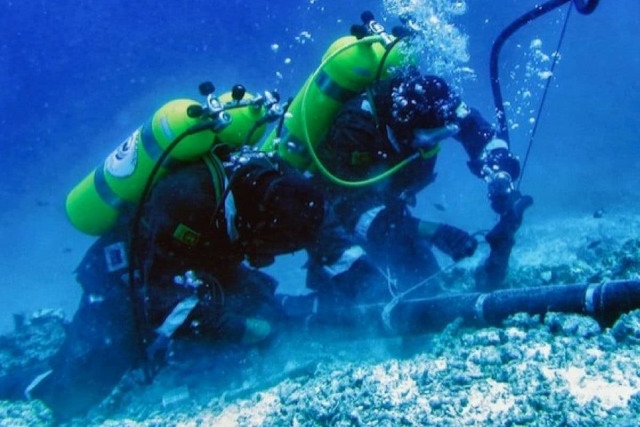The increasing risk of confrontation with Russia and acts of sabotage that occurred on September 26, 2022 on the Nord Stream-1 and Nord Stream-2 gas pipelines in the Baltic Sea accelerated the implementation of plans in NATO and European countries to protect underwater infrastructure, such as communication cables, oil and gas pipelines, and production sites in waters of the exclusive economic zone.
In this vein, NATO and the EU have recently taken a number of steps to eliminate these risks. On January 11, 2023, the EU and NATO announced the creation of a joint Task Force on Resilience and Critical Infrastructure Protection. Later, on February 15, 2023, NATO and the EU respectively established the Underwater Infrastructure Coordination Cell (UICC) at the headquarters of the North Atlantic Alliance, and on March 10, 2023, the EU Commission announced an updated European Maritime Security Strategy and follow-up actions. In addition to these multilateral steps, various efforts are being made at the national level in the NATO and EU member States.
French strategy of the war on the seabed
The French Seabed Warfare Strategy, unveiled in February 2022, has already received two major ongoing procurement programs to support deep-sea research and interventions. These are "Hydrographic and Oceanographic Potential of the Future" (CHOF) and "Marine Mine Countermeasures of the Future" (SLAMF).
The first seeks to update the hydrographic and oceanographic capabilities of the national Navy with a core set of capabilities using breakthrough technologies (unmanned platforms in addition to artificial intelligence).
Currently, at the stage of preparation and determination, it includes the purchase of two 90-meter hydrographic vessels of the next generation, and their payload should include uninhabited vehicles and sensors to meet the growing needs in hydrography. Two vessels are planned to be commissioned in 2027 and 2028, respectively. At the stage of preparation for the CHOF competition, the French Defense Procurement and Technology Agency (DGA) in September 2022 signed a contract with iXblue (now Exail) for a new experimental campaign of the hydrographic uninhabited surface vehicle (USV) DriX and explore launch and recovery systems.
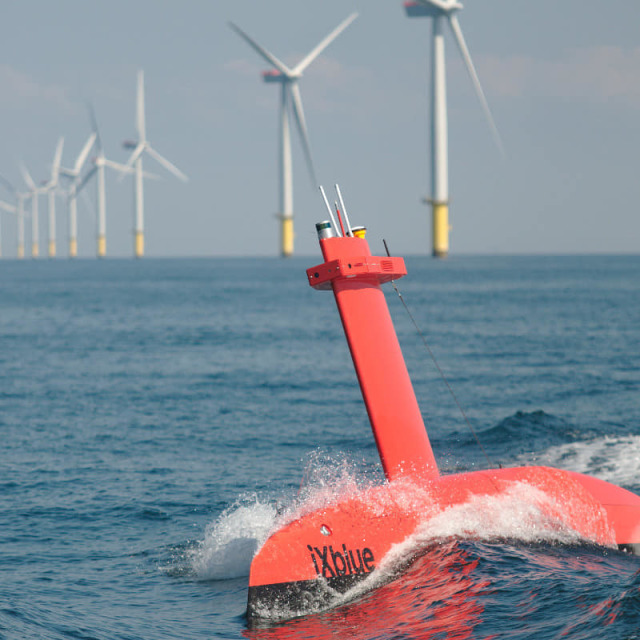
Uninhabited surface vehicle DriX from ExailThe SLAMF program is aimed at the gradual renewal of the naval mine action Capabilities (MCM) of the French fleet.
Its cornerstone is the joint Franco-British program to combat sea mines (MMCM), led by Thales together with the main partners of Exail (then ECA Group), L3Harris and Saab.
As part of the SLAMF/MMCM, France will receive mine countermeasures modules based on the USV platform with a towed Thales sonar with a synthesized aperture, autonomous unmanned vehicles (AUV) Exail and remotely operated vehicles (ROV) Saab for mine clearance. The next stage of the program is planned to be launched later in 2023. It will concern the purchase of new mine-fighting ships to replace Tripartite-type minesweepers in service (MCMV).
As part of the new strategy of warfare on the seabed in 2022, DGA signed lease contracts with Norwegian Kongsberg Maritime and French Exail, respectively, to conduct experiments with HUGIN Superior and A18D autonomous underwater vehicles. The improved version of the HUGIN family is capable of operating at a range of up to 6000 m with good sensory characteristics, positioning and endurance.
The Exail A18D is a medium—sized AUV designed for autonomous tasks at depths up to 3000 m with up to 24 hours of autonomy. Exail is also at the stage of qualifying its AUV Ulyx for the French National Institute of Oceanology IFREMER, capable of reaching a depth of 6000 m, while Alseamar provides well-known SeaExplorer gliders.
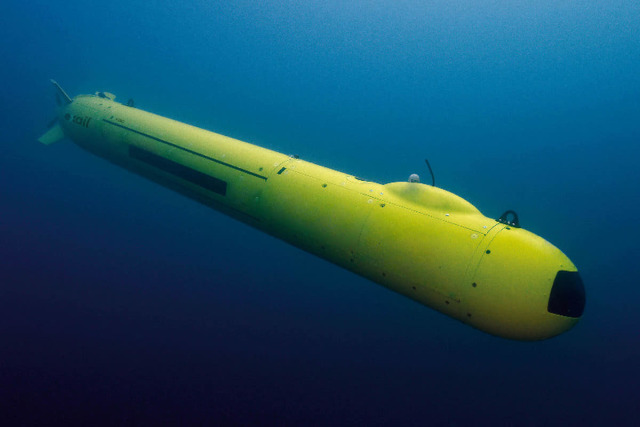
Autonomous uninhabited underwater vehicle A18DThese experiments are aimed at obtaining by 2025 the initial capabilities for exploring the seabed, including one AUV and one ROV capable of operating in waters up to 6000 m deep, as well as a pair of AUV/ROV to work at depths up to 3000 m.
They are intended for use by auxiliary vessels in addition to the platforms of the French Navy. The second phase of the program includes the purchase of two additional pairs of 6000 m ROV and two pairs of AUV/ROV 3000 m to ensure full deployment by 2028.
At the end of 2021, during the 5th Marine Innovation Day of Naval Group, the company presented a new demonstration sample of a large ocean-going Uninhabited Underwater Vehicle (LUUV), developed in collaboration with Thales (a set of sensors) and the startup Delfox, specializing in artificial intelligence (AI). The device with a displacement of 10 tons and a length of 10 m, it has a service life that can vary from several days in the current configuration of the platform to weeks with a longer hull up to 20 m. Naval Group has also developed the medium AUV D19, built on the basis of the F21 Artemis heavy torpedo and equipped with a modular forward payload that can be launched from a submarine, surface from the ship or from the shore.
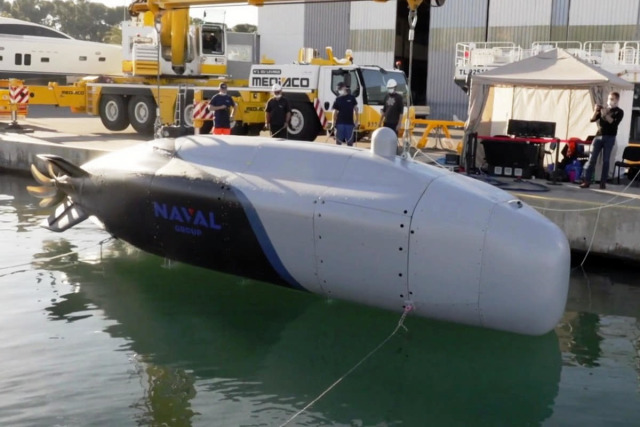
Large Ocean uninhabited vehicle from Naval GroupGreat Britain
The protection of the UK's critically important underwater national infrastructure began in November 2022, when the country's defense minister announced the termination of the national flagship program for specialized vessels and instead accelerated the purchase of two ready-made platforms designated as Multi-Role Ocean Surveillance Ships (MROSS).
The first of two commercial vessels acquired through the Defense Equipment agency & Support, arrived at the Cammell Laird shipyard in Birkenhead in January 2023 for modification ahead of their scheduled commissioning by the UK Auxiliary Fleet in the third quarter of 2023. The first vessel, RFA Proteus (formerly MV Topaz Tangaroa), is an offshore support vessel (OSV). It was built in 2019 by Vard (Fincantieri), has a length of 98 m and a displacement of 6,133 tons.
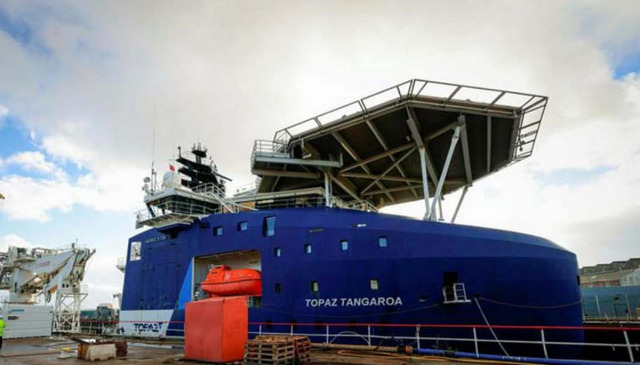
Auxiliary vessel RFA ProteusAccording to the UK MOD, the vessel is being modified to perform a number of tasks in support of military operations, namely, to protect the seabed of telecommunications cables, oil and gas pipelines.
It is also planned to be used as a base ship for remote and autonomous onboard systems for underwater monitoring of the seabed. The RFA Proteus has a width of 20 m, a helipad and a crane with pitching compensation, a large working deck and a shaft for ROV and AUV. After the refit, it will be equipped with a team of 24 RFA sailors and 60 Royal Navy specialists who will work with drones.
It is reported that the second MROSS will be refitted in the UK at the end of 2023 to support MCM and underwater surveillance in British waters. No information has been received about the set of equipment that the two MROSS will be equipped with, but the national civil and security industry can provide certain equipment. In particular, Atlas Elektronik UK and Saab UK can offer their AUV, ROV and USV models, which have already been sold to military and commercial operators around the world.
As part of the Mine Hunting capability (MHC) program The UK Ministry of Defense purchases up to six Maritime Autonomous Systems (MAS) and up to four MCM logistics support vessels (LSV). According to experts, replacing minesweepers of the Hunt and Sandown types, MAS and LSV will provide MCM expeditionary capabilities, and the acquired OSV will allow performing maritime operations in UK waters.
In addition to the marine MCM systems developed under the joint Franco-British program and delivered as part of the first phase of the MHC, the Royal Navy recently acquired the SWEEP autonomous trawling system provided by Atlas Elektronik UK, as well as medium Underwater Autonomous Vehicles (MAUV). The latter include the AUV SeaCat, equipped with a high-resolution sonar with a synthetic aperture, of the same manufacturer.
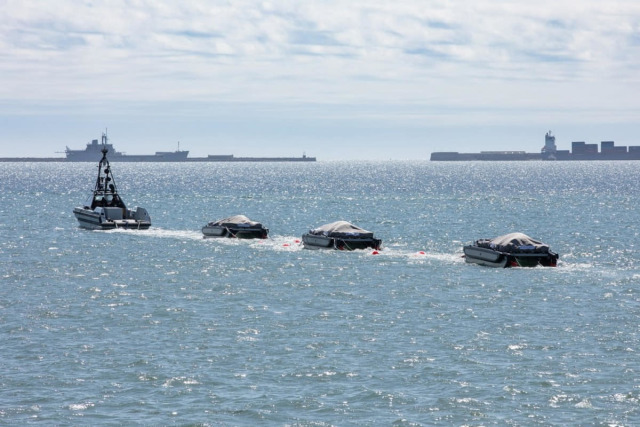
Autonomous trawling system SWEEPIn addition to small and medium-sized uninhabited underwater vehicles (UUVs) from L3Harris and Huntington Ingalls Industries (HII) for MCM tasks, the Royal Navy recently acquired two Teledyne Marine Gavia AUVs designed for a depth of 1000 m, as part of the Hecla project, which aims to optimize the Royal Navy's ability to collect and use hydrographic and oceanographic information.
Ultra-large uninhabited underwater vehicle MantaBased on the experience of creating the ultra-large uninhabited Manta vehicle (XLUUV), a technology demonstrator created as part of the Defense and Security Acceleration program of the Ministry of Defense of the United Kingdom (DASA), in early December 2022, the British company MSubs received a contract to create the first XLUUV for the Royal Navy as part of the Cetus project.
The 17-ton unmanned platform will have a length of 12 m and a diameter of 2.2 m and the ability to work deeper than any vessel in the current submarine fleet, and its power reserve will be up to 1,609 km (1,000 miles) per mission. The unarmed battery-powered AUV will operate independently or side-by-side with traditional manned submarines and will be able to fit into a shipping container for worldwide deployment.
To be continued…
Based on the materials of the publication European Security & Defense
